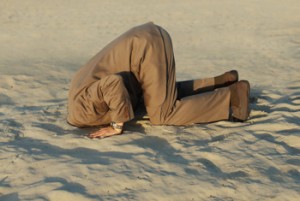Its all about making links.

- An ageing demographic coupled with hot weather trends suggests of course that care homes will generate heat stress related liabilities.
- Vibration exposure triggers a neurovascular response which happens to be pathognomic of cardiovascular disease. As people live longer the temptation will increasingly be to link vibration exposure to stroke, not something that was anticipated when insurers began to pay for vibration white finger (VWF).
- No-one knows why women who do night shift work are more likely to develop breast cancer. But everyone knows that shift work gives rise to fatigue and fatigue plays a part in accidents. Naturally, the regulator would like to put in place fatigue prevention measures. Breach of duty is a fact of life. Will breach of fatigue prevention duty be cited as material to a breast cancer claim?
- When resources are squeezed, the wealthy and fit tend to move to where they can be more comfortable. Economies grow and shrink as a result. In shrinking economies investment in resilience is reduced. Correlated losses become more likely.
- Resilient chemicals used in sun protection products end up in the environment. But they continue to be UV absorbers. UV energy can cause chemical reactions in biological systems and on the surface of valuable assets. Will sun protection products cause environmental damage and property damage?
Innovation
Making links is easy if you “know how it works”.
Of course, it’s harder to quantify the proposed effect on exposure uncertainty. Probabilistic methods may not be 100% accurate, but they do ensure a systematic and responsive analysis of the type expected under solvency 2 pillar 2. New knowledge can always make a contribution to that assessment.

There will always be innovation that wasn’t spotted. Many insurers were surprised and challenged by the growth in asbestos related claims, by deafness claims, by VWF claims but these were all predictable had probabilistic methods been employed. For example, our probabilistic approach would have identified VWF as a major source of IBNR and future claims 14 years before insurers in the UK began to settle claims. The narrative approach favoured at the time was conditioned by a very paternalistic view of the rights and powers of individuals.
There will always be events that couldn’t be spotted. Unfortunately, this latter has become a culturally accepted image of emerging risks. Rather than adopt a rational approach which includes innovative thinking, it is considered that “stuff happens” so put something aside for a rainy day.
